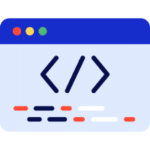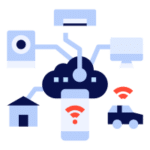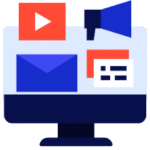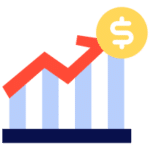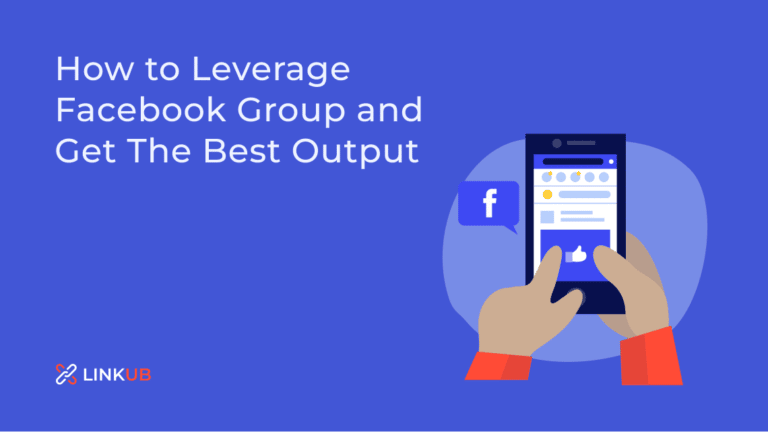260 Best SaaS Pricing Pages in 2024
Pricing pages are the most critical part of your SaaS sales funnel. It tells potential customers the value of your offering while building trust and credibility with your brand. And it will determine if they sign up or not! A pricing page design that converts is everything. They’re not blank spaces to fill in later. You must plan and build them right at the start.
How do you find the best pricing pages for your SaaS? We could advise you to go to SaaS directories (G2, Crunchbase, etc.) and manually detect their pricing pages… 😱 But we have a better plan to save you time.
👉 We have already found SaaS pricing pages and are proud to offer you the list of the best ones. It’s up to you to design the perfect pricing page for your subscription company.
Top SaaS Pricing Pages
Methodology
SaaS sourcing
- We have detected thousands of SaaS companies by crawling millions of web pages.
- We have ranked them by domain authority to offer a high-quality shortlist of 250 SaaS companies.
- We have extracted the URLs of their pricing pages.
Our criteria
No need for a quality rater handbook since we’ve focused on the following:
- SaaS relevance
- Domain authority score
- High-quality pricing pages
SaaS we have covered
This list of pricing pages is based on a very diverse set of analyzed subcategories in the tech sector, including:
Examples of SaaS Pricing Model
Your pricing model will significantly impact how people use your product and how much value they get from it.
Most SaaS pricing models do not fit neatly into a single category. Most businesses use hybrid tiered pricing models derived from the basic per-seat or usage-based pricing model.
Check out these top SaaS pricing pages sorted by pricing model.
1. Tiered pricing
Most SaaS employ the tiered pricing strategy.
Tiered pricing, at its core, allows companies to offer multiple “plans” or “packages” with different combinations of features available at various price points.
Tiered pricing allows the SaaS provider to discriminate based on willingness to pay, expanding their total addressable market.
Semrush
Compact and very informative tiers
SEO marketing company Semrush employs tiered pricing to great effect: each tier is tailored to the needs and budget of a specific type of potential customer. The difference between plans is the number of account limitations and the advanced features you get when you upgrade from Pro to Guru or Business.

Typeform
Simple and effective design
Typeform, a SaaS form builder, has a pricing page that effectively communicates the main difference in pricing. When visiting their pricing page, a prospect can quickly decide which plan is right for them without reviewing the features list and comparing options. The Basic plan unlocks most of the software’s functionality with a limit of 100 responses per month and features; the Plus and the Business plan can upgrade that.

Shopify
Buyer persona-dedicated
E-commerce company Shopify structures its pricing as straightforward monthly recurring revenue with packages starting at $29 for their basic plan to $299 for their advanced plan. They also offer a 14-day free trial. Setting their prices this way allows Shopify to concentrate on their buyer personas, aspirational entrepreneurs, and small business suppliers while competing in the market.

2. Per-seat pricing
Under a per-seat pricing model (also called per-user), a SaaS company charges a subscription fee for each licensed product user.
Per-seat pricing is one of the most common pricing strategies for SaaS companies.
Atlassian
Real-time cost estimation
Atlassian’s project management software suite is an excellent example of when per-user pricing makes sense. Because people use these platforms to collaborate on projects, they can charge per user. Jira’s pricing page is a massive table with all the pricing options. They have a space for you to type in the desired number of users just above the table. So, you can quickly obtain an estimated price for each plan without launching your calculator tool.

Insightly
Minimal and on-brand design
CRM is another great example. With CRM software, multiple tea members add contacts, collaborate on deals, and manage customer relationships. Insightly CRM employs a per-seat pricing model, tiered by a feature set. They offer a free plan for two users to let you and a partner manage contacts, sales, and projects in one place.

Notion
Clean and engaging
Productivity tool Notion is a well-known example of a SaaS company succeeding with the per-user pricing model. They offer a freemium option, standard among products designed to attract large user bases. They have also divided their pricing website into a personal and business plan.

3. Usage-based pricing model
The use base pricing model is called the Pay As You Go model.
This pricing model correlates the cost of a SaaS product to its usage: the more you use the service, the higher your charge; the less you use it, the lower your payment.
Furthermore, SaaS companies are increasingly exploring new methods to tweak the model, such as social media programs that charge for scheduled postings or accounting software that charges per invoice.
Stripe
Simple pay-as-you-go
Usage-based pricing works particularly well for payment platforms like Stripe. By precisely correlating pricing and revenue, you can ensure that price rises occur only during increasing revenue, guaranteeing that customers can always afford and justify the price adjustment. Stripe charges a percentage of each card charge. As a result, the more their customers bill, the more revenue Stripe gets.

SendGrid
Tiers with sliding scale
Using usage-based pricing is ideal if you provide a service encouraging customers to grow their audience, income, and subscribers. Take email marketing, where list growth and revenue are inextricably linked. Tools like SendGrid offer a sliding scale in which your monthly payments increase as your list grows.

Mailchimp
Price anchoring
One of the marketer leaders in the email marketing automation category, Mailchimp, has based its pricing on three important factors: the number of stored contacts, the number of sent emails, and the features used. Mailchimp’s primary value metric is the size of the subscriber list that you set up on the pricing page. You can pay a monthly recurring charge or buy email credits as needed through the Pay As You Go plan. They display pricing options from the most expensive to the cheapest, making the basic plans look cheaper.

4. Flat rate pricing model
Flat rate pricing is perhaps the most straightforward approach to market a SaaS solution: you offer a single product, a single set of features, at a flat rate for the customer’s entire organization. However, because improved and cheaper technology has enabled the development of scalable pricing structures, flat-rate pricing in SaaS is rarely seen.
Basecamp
Flat rate SaaS ambassador
Basecamp, a popular time management and productivity software, is the outlier success story of flat-rate pricing in the SaaS world. Why has this been so fruitful? Flat-rate pricing is fundamental to the company’s model. Offering a single product for a single price allows you to concentrate your sales and marketing efforts on selling a single, well-defined offer. Basecamp has a single plan: Basecamp Business at $99.00 per month for 500 GB of storage, unlimited projects, unlimited users, and no per-user fees.

What Makes a Great Pricing Page?
If your pricing page isn’t well-designed and user-friendly, you risk losing customers before they hit the “Buy Now” button. The best pricing pages feature clean layouts, employ straightforward language, and try to inspire customer trust.
Let’s look at the essential components of a successful pricing page.
Minimalism
Simple pricing pages are best. They should offer benefits and value before leading a conversion action.
Clear pricing
The best pricing pages offer clear plans for various business sizes and budgets. Consider including monthly and yearly subscription terms if you sell a SaaS product.
Easy-to-use design
The most effective pricing pages are user-friendly. Your pricing page can display much information, but your design elements – fonts, colors, buttons – must be easy to read.
Plain language
Keep the information clear and jargon-free. Someone who isn’t an expert can tell which bundle would be best for their team.
Checklist for Designing Your Pricing Page
How To Evaluate Your Pricing Page
Even if you adhere to all best practices on your price pages, there’s a high possibility you won’t get it right on the first try.
After all, pricing is an iterative process.
So, how do you evaluate if your pricing page is performing?
As usual, the key is the data. First, start with these quantitative metrics to give you insight into how you’re doing.
Then you can use customer surveys to optimize your page.
Conclusion
And that’s a wrap on our collection of the best SaaS pricing pages!
From clever tiered structures and transparent pricing to captivating designs and strategic messaging, we’ve explored what sets these pages apart and drives their success.
As you reevaluate your pricing page, remember to draw inspiration from these industry leaders and adopt the elements that align with your brand and target audience.
Here’s to creating a winning pricing page that helps your business grow and thrive!
Happy pricing, and may your revenue reach new heights!
Further reading
FAQs
A SaaS (Software as a Service) pricing page is a section on a website that displays the different subscription plans and pricing tiers a SaaS company offers. It is essential for conveying value, setting customer expectations, and allowing potential customers to compare and choose the plan that best suits their needs.
The key elements of an effective SaaS pricing page include the following:
• Clear pricing tiers
• Easy-to-understand plan names
• Detailed feature lists
• Prominent call-to-action buttons
• Transparent billing information
• Social proof like customer testimonials or logos of well-known customers
The proper pricing structure depends on factors such as your target audience, the perceived value of your product, and the competitive landscape. Some standard pricing models include per-user, feature-based, and usage-based pricing. Consider researching your competitors, understanding your customers’ willingness to pay, and testing different pricing models to find the one that works best for your business.
There is no one-size-fits-all answer, but generally, most SaaS companies offer 3-4 pricing tiers to accommodate different user needs and budgets. This balances simplicity and choice, allowing potential customers to easily compare plans and make informed decisions.
Offering a free trial or freemium plan can attract potential customers and help them evaluate your product before committing to a paid plan. Consider your target audience, product type, and acquisition costs when offering a free trial or freemium plan.
Use clear and concise language to list the features and benefits of each tier, with a focus on the unique value provided at each level. Visual aids, such as checkmarks or icons, can help highlight differences and make it easy for users to compare plans.
Regularly re-evaluating your pricing strategy ensures it remains competitive and relevant to your customers’ needs. Review your pricing at least once a year or whenever you introduce major product updates, expand into new markets, or notice significant changes in your competitive landscape.
Displaying pricing in different currencies can help increase trust and reduce friction for international customers. If you cater to a global audience, consider offering currency options based on the user’s location or allowing them to manually select their preferred currency.
Social proof can help build trust and credibility for your product. Showcase customer testimonials, case studies, or well-known client logos relevant to the pricing tiers. Ensure the social proof is authentic and highlights the benefits of your product or specific features of each plan.
To optimize conversion rates, continuously A/B tests various elements of your pricing page, such as headlines, plan names, pricing structures, and call-to-action buttons. Track user behavior and engagement, gather customer feedback, and make data-driven decisions to refine your pricing page and improve conversions.


